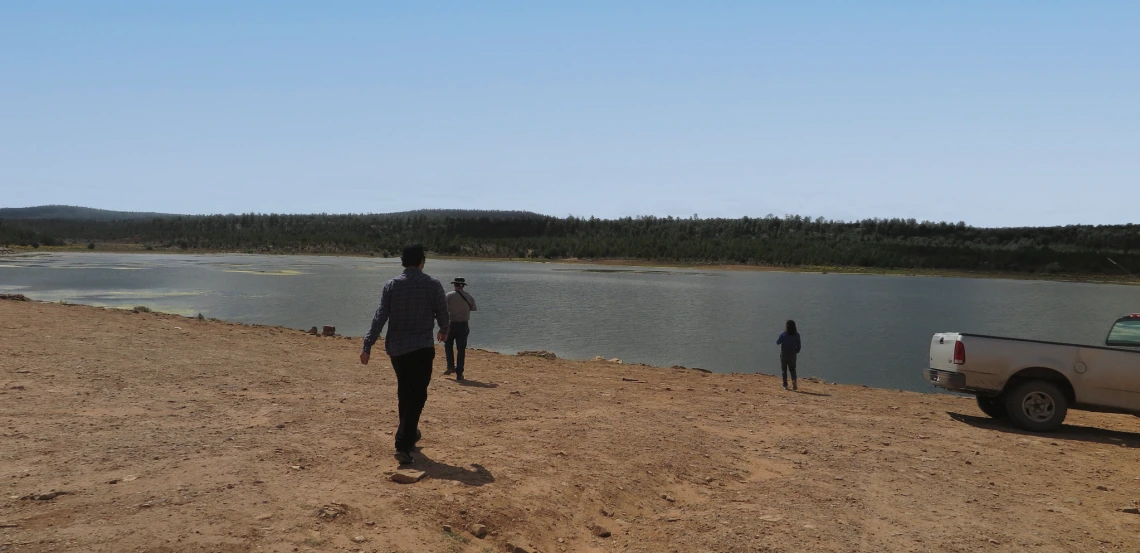Wicked Water Problems
Addressing Water Sustainability in Partnership with Native Communities

Many people and programs at the University of Arizona used the disruption of the coronavirus pandemic as an opportunity to reflect and refocus. The Agnese Nelms Haury Program in Environment and Social Justice is one such program. It shifted from addressing a broad range of environmental and social justice issues to narrowing its scope exclusively to a new Tribal Resilience Initiative.
“We pivoted to a concentrated focus on resilience for tribal communities, with water sustain-ability being paramount,” says Toni Massaro, executive director of the Haury Program. Massaro is a Regents Professor and dean emerita at the James E. Rogers College of Law. She was chair of Haury’s advisory council before accepting the role of executive director in 2021.
The Navajo Nation, which spans over 27,000 square miles throughout Arizona, New Mexico and Utah, was hit disproportionately hard with coronavirus infections. The pandemic also exacerbated the Nation’s long-standing water sustainability crises. Stay-at-home orders, curfews and travel restrictions meant decreased accessibility to water and other essential services. Among the many challenges, basic mitigation strategies like frequent hand washing weren’t an option for residents without running water.
“We focused on water access for a large population of water haulers, meaning they do not have access to running water in their homes and have to haul it in. Some estimates place up to 40% of our population in this category,” says Crystal Tulley-Cordova, Ph.D., principal hydrologist in the Navajo Nation Department of Water Resources.
In partnership with Indian Health Services, Navajo Safe Water constructed 58 transitional water stations for communities that did not have pre-existing watering points. The Haury Program helped fund media outreach — including English and Navajo language messaging — on radio, social media and print newspapers. Thanks in part to the multifaceted outreach approach, public awareness increased, and the water stations were a success.
“During this unprecedented time, our needs are variable, but the Haury Program was willing to listen and ask us how they could help,” Tulley-Cordova says.
Massaro agrees that partnership is key to success. “We don’t create the goals; our tribal partners do,” she says.
Massaro says this is not the approach all funders take, but for the Haury Program, philanthropy that respects tribal knowledge and tribal sovereignty is the only way to go.
“Without genuine collaboration, it won’t be effective. We need their knowledge as much as they leverage ours. They have traditional ways of managing their resources, their water, their live-stock, their land. The whole world has something to learn from that traditional knowledge,” she says.
In the past year, the Haury Program has funded nearly two dozen Tribal Resilience Initiative projects, including an online portal connecting all UArizona programs devoted to tribal resilience. Massaro emphasizes ongoing support to tribal initiatives for long-term regional impact. “You don’t want to put a Band-Aid on something and walk away,” Massaro says.
“The Navajo Nation has some wicked water problems,” says Tulley-Cordova. “They aren’t easily solved. It takes years, it takes people, and it takes different ideas. Legacy mining has impacted our water quality; we have water rights issues among three states and multiple basins; and we have rural living and a dispersed population.”
Tulley-Cordova says she grew up on Navajo Nation in an area that has unique water challenges. “I knew I wanted to return to help the Navajo people and help them have access to safe water, so they can have a livelihood that they deserve.”—Kim Stoll

Agnese Haury / photo courtesy of the Haury Program

